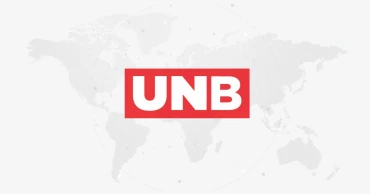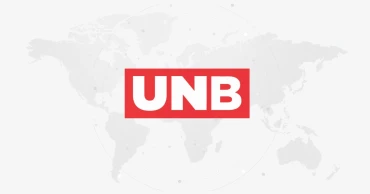Safe drinking water
Probaho marks 16yrs of providing safe drinking water to crisis-prone areas
Marking its 16th anniversary, Probaho, a private sector initiative, continues to serve communities affected by arsenic contamination and saltwater intrusion by providing access to safe and clean drinking water.
As part of its anniversary celebration, PROBAHO inaugurated two new water filtration plants in Satkhira’s Alipur and Gabura, increasing the total number of filtration plants to 126 across 25 districts nationwide.
Arsenic contamination in shallow tube wells has long posed significant health risks to millions of people in Bangladesh, while climate change has exacerbated water scarcity by causing droughts and rising sea levels, leading to increased saltwater intrusion, said a press release.
These challenges highlight the significance of World Water Day in Bangladesh, emphasising the urgent need for solutions to ensure access to clean water.
PROBAHO’s initiative has been instrumental in addressing the water crisis by installing filtration plants in underserved communities. The 126 water filtration plants, spread across districts such as Kushtia, Manikganj, Rangamati, and Satkhira, provide long-term, sustainable solutions to ensure access to safe drinking water and protect public health.
AES Bangladesh Consortium launched to drive EdTech innovation across Asia
Speaking about the initiative, Ahmed Raihan Ahsanullah, a spokesperson for PROBAHO, said, “On our 16th anniversary, we aim to expand our coverage across the country to alleviate the water crisis worsened by climate change. We are committed to offering a sustainable model that ensures long-term access to safe drinking water.”
Marginalised communities are actively engaged in the operation and maintenance of the filtration plants, ensuring their sustainability. To continue its mission and expand its impact, PROBAHO seeks the continued support of beneficiaries and well-wishers, the release added.
9 months ago
No let-up in safe drinking water scarcity in Khulna’s Dacop
Over 2 lakh residents of salinity-hit Khulna’s Dacop upazila have been grappling with a severe shortage of safe drinking water since the onset of the dry season.
Long queues have become a common sight at shops selling purified open water, while some people are resorting to collecting water from distant sources.
The dire situation has forced some residents to consume water from ditches and drains, leading to an outbreak of various waterborne diseases, including diarrhoea.
Also Read: Many embankments turn vulnerable in Khulna’s Koyra; Fear grips residents
Dakop, which borders the Sundarbans, consists of three separate islands. Due to the high salinity levels in the surrounding rivers, the region experiences an extreme scarcity of fresh water during the dry season, said locals.
This year, as in previous years, the municipality and nine unions are grappling with an acute shortage of safe drinking water.
Visiting different areas in the upazila, the UNB correspondent found the scarcity of clean water has even affected the functioning of tea shops, restaurants, and sweet shops, frustrating shopkeepers who are unable to provide clean water to their customers.
Also Read: Walking the extra mile for water in coastal Khulna
The agricultural sector has also been severely affected , particularly in the current ‘Robi’ season when Boro paddy and watermelon farmers experiencing substantial losses due to the inability to irrigate their fields.
Most of the shallow tube wells have been lying inoperative and many tubewells contain salt, arsenic, and excessive iron content, exacerbating the water quality issues, said locals.
Furthermore, the region experiences insufficient rainfall, further limiting water availability.
Read more: Short Films on Water: Dhaka DocLab, British Council to screen four climate documentaries
Consequently, filtering water from ponds has become the only viable option for the locals. However, the scarcity of water in the inadequate ponds renders most filters or pond sand filters (PSFs) ineffective.
Wealthy individuals in the Batiaghata area of Khulna are able to purchase water from different locations, while middle-class and low-income residents are left with no choice but to consume water directly from the pond.
Consequently, the scarcity of clean drinking water has compelled this large population to rely on unhealthy food and water, resulting in a surge of waterborne diseases, including diarrhoea.
Read more: Coca-Cola Foundation, WaterAid working to enhance water security in Bangladesh
Nimai Mandal, a UP member from Ward No. 9 in the Kalabagi area, along with many others, explained that they have to endure great difficulties in collecting fresh water from the neighboring Kailashganj area, a journey of approximately 4 to 5 kilometers by boat.
Meanwhile, those who have the means and resources, purchase water from outside the region.
Nimai Mandal highlighted that some vulnerable individuals in the area resort to directly consuming impure water from the pond.
Samaresh Mandal, a hotelier in Chalan Bazar, expressed his predicament, saying, “Due to the water shortage, I am unable to provide water to customers. As the water from the pond is unhealthy for consumption, we are forced to use it for washing plates."
Read more: Water crisis hits Boro cultivation in Feni ‘s Sonagazi
Similar concerns were echoed by Milan Mallick, a tea shop owner.
In response to the crisis, Mehdi Hasan Bulbul, Panel Mayor of the Chalan Municipality, said that a water purification plant has been completed in the municipality under a water project aimed at resolving the drinking water crisis.
Additionally, house-to-house pipeline works are underway in various areas of the municipality.
Bulbul thinks that once these projects are completed, the shortage of fresh water in the municipality area will be significantly alleviated.
Abdullah Al Mahmud, Sub-Assistant Public Health Engineer of Dakop Upazila, said there are ongoing projects.
Read more: Dhaka calls for enhanced int'l financing for sustainable water management
However, he also said that these efforts are inadequate against the region's requirements.
To meet the growing demand for water, the engineer suggested individually and institutionally digging ponds and ‘dighis’ during the critical period.
Expanding the number of rainwater harvesting tanks and ponds in the region is deemed essential to mitigate the water crisis, he added.
Munsur Ali Khan, Chairman of Dakop Upazila Parishad, said the Upazila Parishad has initiated a project to distribute water tanks among underprivileged families.
Measures are being taken to excavate ponds and canals as alternative water sources, he said.
Read more: How to Build Dhaka as a Water Wise City
2 years ago
Safe drinking water: Bangladesh 5th in South Asia, 128th in the world
In Bangladesh, we may expect that whatever comes out of the tap will be drinkable. The data, however, suggests a very grim reality.
Bangladesh scored 26.90 out of 100 in the 2022 Environmental Performance Index (EPI), meaning the local tap water is one of the most dangerous in the world.
Bangladesh ranked fifth in terms of access to safe drinking water in South Asia and 128th overall.
In South Asia, Bangladesh is only ahead of Nepal (25.90), India (18.30), and Pakistan (15.30).
Read More: On India’s shore, rising salinity means daily water struggle
Meanwhile, Sri Lanka ranked first in the region with a score of 46.70, followed by the Maldives (41.2), Bhutan (31.5), and Afghanistan (27.80).
The Yale University’s EPI index looks at the quality of drinking water in 180 countries around the world based on the number of age-standardized disability-adjusted life-years lost per 100,000 persons (DALY rate) due to exposure to unsafe drinking water. All of the countries on the list are ranked by a score from 0 to 100, with a score of 100 indicating very safe drinking water and a score of 0 indicating the most unsafe.
QS Supplies, one of the UK's largest independent bathroom wholesalers and retailers, has used EPI and CDC data to create a new set of data visualizations to illustrate the severity of the situation and to flag the countries where it is and is not safe to consume the tap water.
Read More: Dhaka for enhanced international cooperation for advancing Water Action Agenda
The data from the CDC suggests that the water coming out of the tap in Bangladesh is “not safe to drink.”
According to the World Health Organization (WHO), more than a quarter of the world's population lives in water-stressed countries, and a similar number uses a drinking water source contaminated with feces.
These conditions cause diarrheal diseases including cholera, dysentery, typhoid, and polio to spread through drinking water each year. Common chemical contaminants include lead, mercury, pesticides, pharmaceuticals, and microplastics.
Read More: Momen for sustainable water management for promoting global peace, stability
While the large cluster of 100-rated nations in the centre of the data visualization consists entirely of European nations, the 24 countries with the lowest rating are all in Africa.
Among the 180 countries, there are only 50 that the CDC lists as having drinkable tap water. The US disease control agency discourages drinking tap water in much of Asia and Latin America and in every country in Africa.
According to the CDC's safety advisory on tap water, no country in South Asia has access to drinkable tap water.
Read more: How to Build Dhaka as a Water Wise City
2 years ago
Chevron Bangladesh supports its fence line communities
Chevron Bangladesh, as part of its annual social investment efforts, recently provided materials such as hand-pumps, pipes and filters, for 80 deep and shallow tube-wells to ensure supply of safe drinking water to people living near its operational areas.
4 years ago
Safe drinking water crisis grips Amphan-hit Sharankhola
People in Amphan-hit Sharankhola upazila have been facing acute drinking water crisis as saline water gushed into villages during the cyclone destroying their sources of safe water including ponds and tube-wells.
5 years ago







